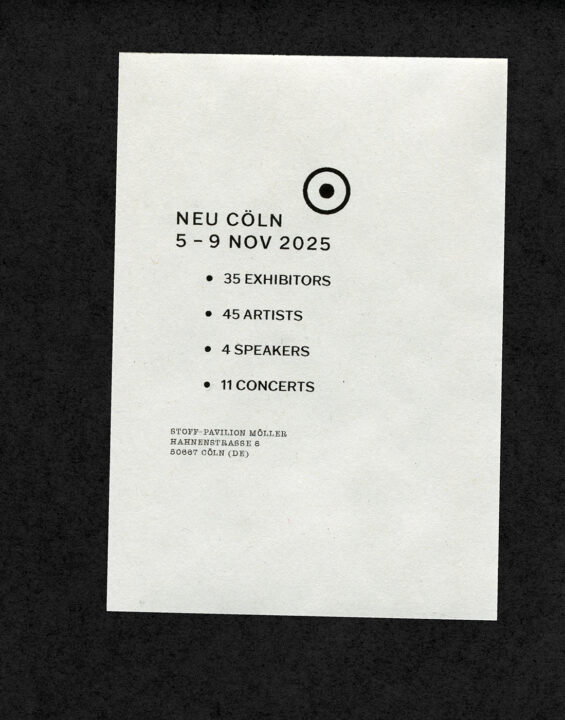Upcoming
Reena Spaulings
Keep On Truckin’
Opening Thursday, November 6, 2025 / 6 – 10 pm at JUBG, Cologne
Exhibition November 6 – December 13, 2025

JUBG at Neu Cöln with Maggie Friedman & Merlin Carpenter
Opening Wednesday, November 5, 2025 / 6 – midnight
Exhibition November 5 – 9, 2025
Neu Cöln at Stoff-Pavillon Möller
Hahnenstrasse 8, 50667 Cologne
www.neucoeln.com

